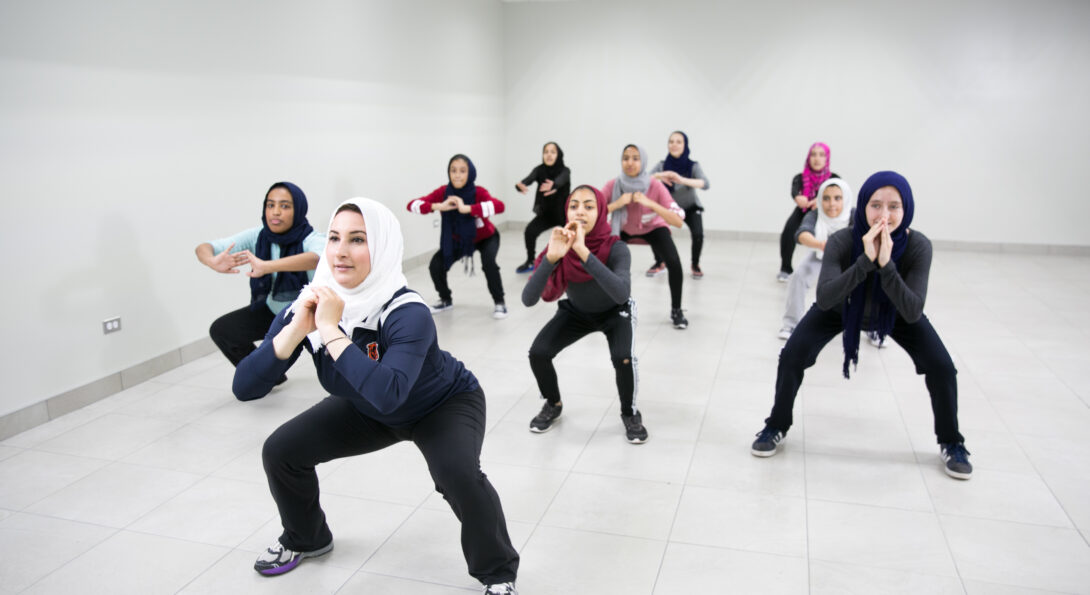Healthy habits

Rhonda Atallah ’15 BS KINES was on the softball, volleyball, basketball and track teams at Stagg High School in Palos Hills, Ill., but she didn’t think much about the mechanics of her body until she suffered a season-ending injury.
“Thanks to physical therapy, I was exposed to how the muscles work and how they can heal themselves,” she recalls. “I found it fascinating that I was able to put my toe back on the floor after a week, and another week after that, I could put my heel down.”
Atallah started researching anatomy and physiology in her free time. Before long, she decided that she wanted to pursue a career in physical therapy.
Today, that remains Atallah’s goal, but she has taken a fruitful detour on her journey. She became an educator and coach, teaching science, health and physical education to girls at two Islamic schools.
After graduating from UIC, Atallah accepted a teaching position at Aqsa School, an all-girls Islamic academy in Bridgeview, Ill. Atallah taught physical education to sixth- through twelfth-grade students, as well as anatomy and physiology to tenth-, eleventh- and twelfth-grade students, during the 2015-16 school year. She also coached volleyball and basketball.
Having been a successful student at UIC, Atallah assumed she wouldn’t have too much difficulty transitioning to the front of the classroom. So she was surprised to discover the learning curve was a bit steep.
“At first, I didn’t really understand that learning the material is different from teaching the material,” she explains. “When you’re teaching the material, you have to get through to many different minds, not all of whom process information in the same way.”
But each time a student posed a question or expressed confusion, Atallah found herself gleaning something new from the subject.
“They made me rethink things, which was amazing, because I was able to learn anatomy again from a whole new point of view,” she says.
The reality was that Atallah’s students hadn’t previously been exposed to such a detailed course in anatomy and physiology. They were accustomed to reading a textbook and answering a few questions at the end of each chapter. In contrast, Atallah modeled her classroom instruction on her UIC courses. In particular, she wanted her students to understand the practical implications of the material, so she focused on the applied health angle.
Luckily, Atallah’s students were very curious and eager to learn. Of course, they were also teenage girls, which meant certain topics led to giggles. Atallah remembers adopting a sympathetic but stern tone during the units on female and male reproductive health: “I told them, ‘Listen, if you want to learn about it, let’s learn about it. Let’s make this a serious class.’”